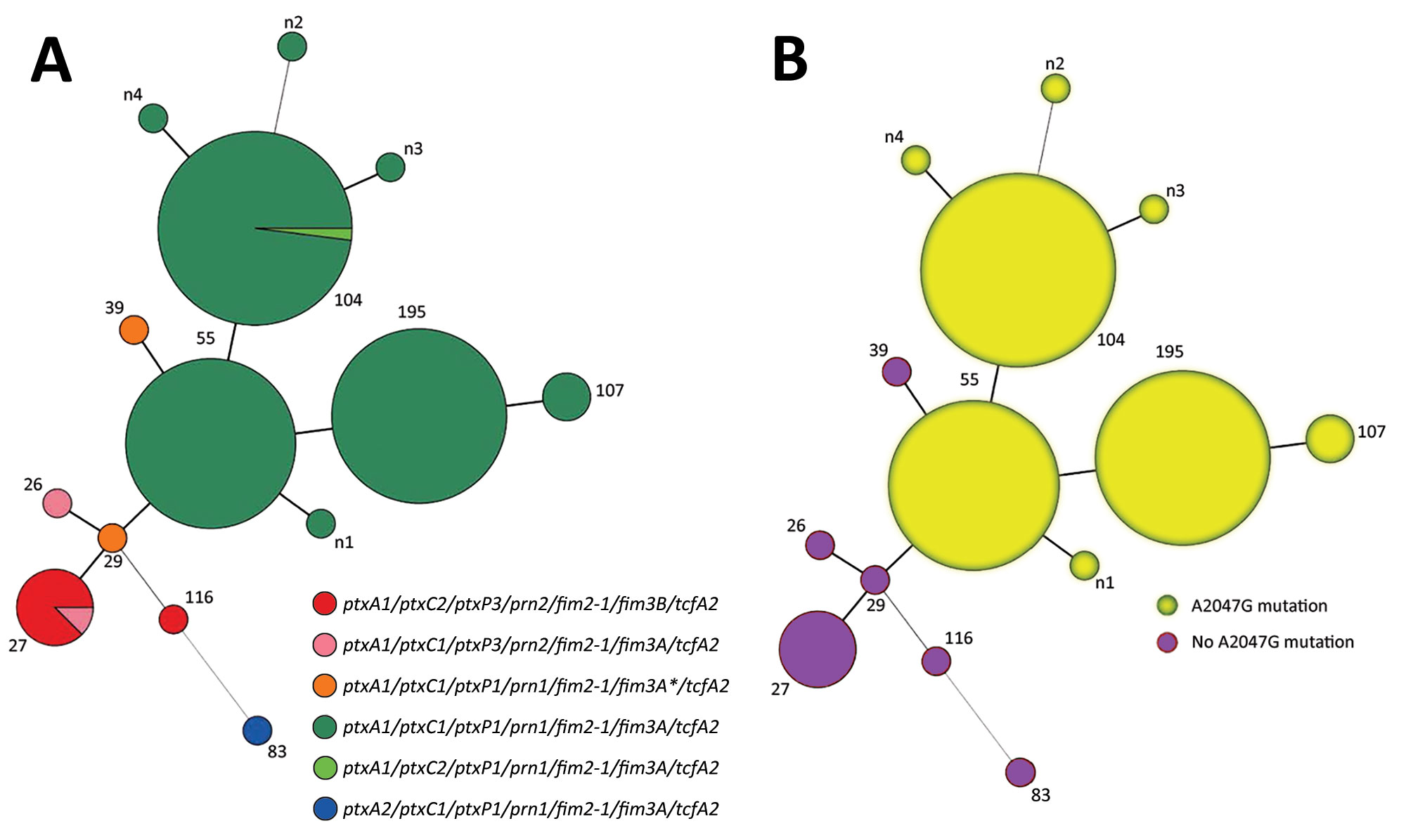Volume 25, Number 12—December 2019
Research
High Prevalence of Macrolide-Resistant Bordetella pertussis and ptxP1 Genotype, Mainland China, 2014–2016
Figure 3

Figure 3. Minimum spanning tree of multilocus variable-number tandem-repeat analysis (MLVA) types of 150 Bordetella pertussis isolates collected in China, 2014–2016. Each circle represents an MLVA type, with the number next to the circle. Circle sizes are proportional to the number of isolates belonging to the particular MLVA type. A) Allelic profiles. Circle colors indicate the different allelic profiles of vaccine antigen genes and different erythromycin sensitivities. B) Presence or absence of A2047G mutation.
1These authors contributed equally to this article.
Page created: November 18, 2019
Page updated: November 18, 2019
Page reviewed: November 18, 2019
The conclusions, findings, and opinions expressed by authors contributing to this journal do not necessarily reflect the official position of the U.S. Department of Health and Human Services, the Public Health Service, the Centers for Disease Control and Prevention, or the authors' affiliated institutions. Use of trade names is for identification only and does not imply endorsement by any of the groups named above.